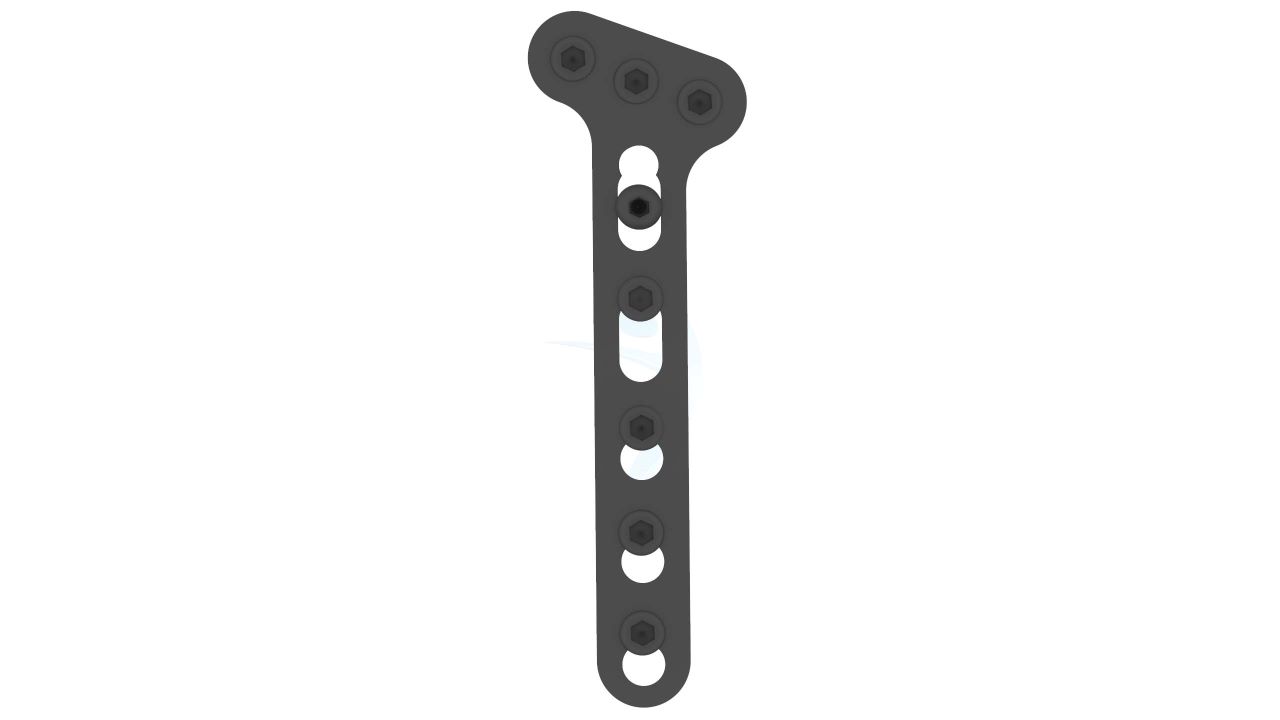Volar Distal Radius Plate - T Plate (Oblique Angled)
Product Overview
Elevate orthopedic precision with our cutting-edge Volar Distal Radius T Plate (Oblique Angled) . Designed for excellence in fracture fixation and osteotomy stabilization of the distal radius bone, this innovative medical device sets a new standard in orthopedic care. Crafted with utmost precision, the Volar Distal Radius T Plate (Oblique Angled) provides robust stabilization and optimal alignment during surgical procedures. Its unique oblique angle configuration ensures a perfect fit to the anatomy, enabling surgeons to address a wide range of fractures and deformities effectively.









Product Uses
- Fracture Fixation : The "Volar Distal Radius T Plate (Oblique Angled)" is specifically designed for stable fixation of distal radius fractures in the volar (palm-side) aspect of the wrist.
- Osteotomy Stabilization : Surgeons can utilize the plate to stabilize bones after an osteotomy procedure, ensuring accurate alignment and support during healing.
- Malunion Correction : The plate can be used to correct malunions (improperly healed fractures) of the distal radius, restoring proper alignment.
- Joint Arthrodesis : In cases requiring joint fusion, the "Volar Distal Radius T Plate (Oblique Angled)" can be used to immobilize the joint and promote fusion.
- Bone Graft Support : During bone graft procedures, the plate provides stability and support to enhance graft integration and bone healing.
Product Specification
- Material :The type of medical-grade material titanium alloy, ensuring biocompatibility and strength.
- Plate Size : The dimensions of the plate, including its length, width, and thickness, to accommodate various patient anatomies.
- Oblique Angle : The angle of the plate designed for optimal fixation in the volar (palm-side) aspect of the distal radius bone.
- Screw Holes : The number, size, and orientation of the screw holes on the plate to allow for secure screw fixation.
- Locking Mechanism : Whether the plate has a locking mechanism to prevent screw backout and enhance stability.
- Sterility : Whether the plate is provided in a sterile condition for immediate use in the operating room.
Volar Distal Radius - T Plate (Oblique Angled) Sizes
Comprehensive Guide for Volar Distal Radius - T Plate (Oblique Angled)
- Patient Evaluation : Conduct a thorough assessment of the patient's medical history, including any previous injuries or surgeries, allergies, and existing medical conditions.
- Imaging Studies : Review and analyze X-rays, CT scans, or MRI images of the patient's distal radius to determine the extent of the fracture or osteotomy and plan for appropriate plate size and placement.
- Surgical Planning : Collaborate with the surgical team to create a comprehensive surgical plan, considering the fracture type, bone quality, and the desired alignment of the distal radius.
- Implant Selection : Select the appropriate size and configuration of the "Volar Distal Radius T Plate (Oblique Angled)" based on the patient's anatomy and the surgical plan.
- Informed Consent : Obtain informed consent from the patient, explaining the surgical procedure, potential risks, benefits, and possible alternatives to using the "Volar Distal Radius T Plate (Oblique Angled)."
- Patient Preparation : Administer the appropriate anesthesia to the patient, ensuring they are comfortable and ready for the surgery. Position the patient correctly, and drape the surgical site in a sterile manner.
- Incision and Exposure : Make an appropriate incision over the volar aspect of the distal radius to expose the fractured or osteotomized bone.
- Fracture Reduction or Osteotomy : If necessary, perform fracture reduction or osteotomy to realign the bone segments and restore the proper anatomy.
- Plate Selection : Select the appropriate size of the "Volar Distal Radius T Plate (Oblique Angled)" based on preoperative measurements and the patient's anatomy.
- Plate Placement : Carefully position the "Volar Distal Radius T Plate (Oblique Angled)" on the volar aspect of the distal radius bone, ensuring that the plate's angles match the bone contours accurately.
- Immediate Postoperative Period : Transfer the patient to the recovery area and closely monitor their vital signs and overall condition.Ensure the patient's comfort and safety during the initial recovery phase.
- Wound Care : Keep the surgical incision site clean and dry.Change dressings regularly, following the surgeon's instructions or institutional protocols.
- Immobilization and Weight-Bearing : Instruct the patient to follow weight-bearing guidelines, if applicable, as recommended by the surgeon.Provide guidelines for immobilization, which may include the use of a cast, splint, or brace to support the wrist during the initial healing phase.
- Physical Therapy and Rehabilitation : Initiate a guided physical therapy program as prescribed by the surgeon to promote wrist mobility and strength gradually.
- Medication Management : Administer antibiotics, if prescribed, to prevent infection. Provide pain medications and anti-inflammatory drugs, as needed, to manage postoperative discomfort.








.png)




